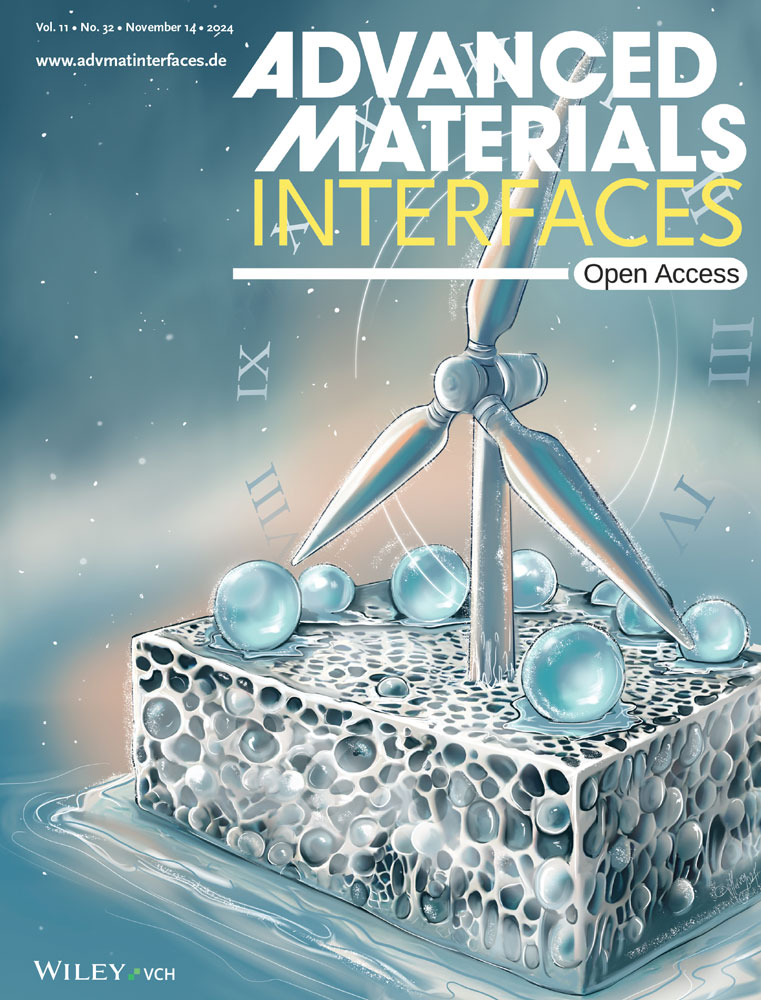基于COMSOL有限元分析的电极-组织界面微动应变安全裕度评估。接口9/2025)
IF 4.3
3区 材料科学
Q2 CHEMISTRY, MULTIDISCIPLINARY
引用次数: 0
摘要
在文章2401001中,Danesh Ashouri Vajari, Thomas Stieglitz及其同事通过模拟不同位移下电极-组织界面的应变曲线,研究了大脑运动对神经探针生物相容性的影响。他们的发现挑战了5%的应变损伤阈值,强调了尺寸依赖的微运动模型,以及在神经装置开发的早期阶段整合免疫组织学数据来评估探针设计的潜力。本文章由计算机程序翻译,如有差异,请以英文原文为准。

Assessing the Safety Margin for Micromotion-Induced Strain at Electrode–Tissue Interface: A Finite Element Analysis via COMSOL (Adv. Mater. Interfaces 9/2025)
Neural Device Development
In article 2401001, Danesh Ashouri Vajari, Thomas Stieglitz, and co-workers investigate the impact of brain movement on the biocompatibility of neural probes by simulating strain profiles at the electrode-tissue interface under various displacements. Their findings challenge the 5% strain damage threshold, highlighting size-dependent micromotion models and the potential for integrating immunohistological data to assess probe design in the early stages of neural device development.
求助全文
通过发布文献求助,成功后即可免费获取论文全文。
去求助
来源期刊

Advanced Materials Interfaces
CHEMISTRY, MULTIDISCIPLINARY-MATERIALS SCIENCE, MULTIDISCIPLINARY
CiteScore
8.40
自引率
5.60%
发文量
1174
审稿时长
1.3 months
期刊介绍:
Advanced Materials Interfaces publishes top-level research on interface technologies and effects. Considering any interface formed between solids, liquids, and gases, the journal ensures an interdisciplinary blend of physics, chemistry, materials science, and life sciences. Advanced Materials Interfaces was launched in 2014 and received an Impact Factor of 4.834 in 2018.
The scope of Advanced Materials Interfaces is dedicated to interfaces and surfaces that play an essential role in virtually all materials and devices. Physics, chemistry, materials science and life sciences blend to encourage new, cross-pollinating ideas, which will drive forward our understanding of the processes at the interface.
Advanced Materials Interfaces covers all topics in interface-related research:
Oil / water separation,
Applications of nanostructured materials,
2D materials and heterostructures,
Surfaces and interfaces in organic electronic devices,
Catalysis and membranes,
Self-assembly and nanopatterned surfaces,
Composite and coating materials,
Biointerfaces for technical and medical applications.
Advanced Materials Interfaces provides a forum for topics on surface and interface science with a wide choice of formats: Reviews, Full Papers, and Communications, as well as Progress Reports and Research News.
 求助内容:
求助内容: 应助结果提醒方式:
应助结果提醒方式:


